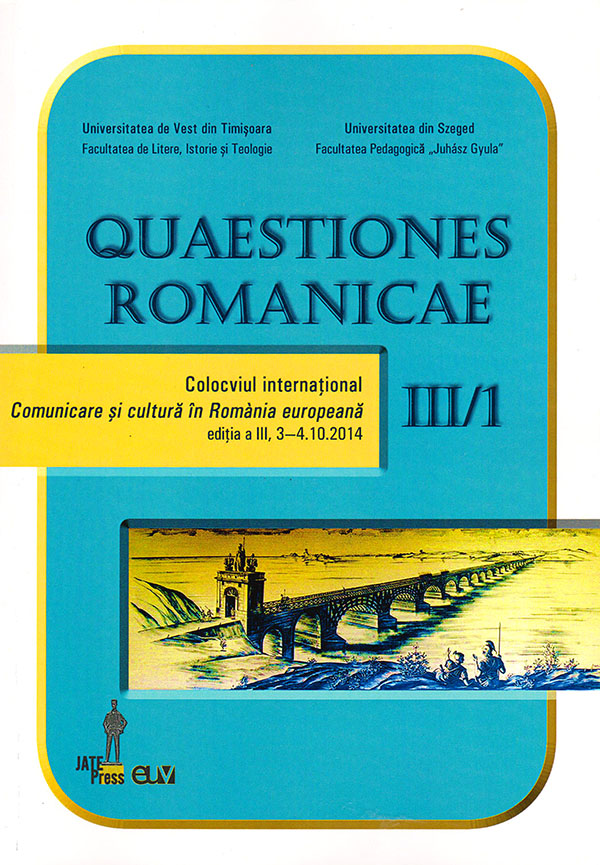L’offensiva ottomana contro Szolnok ed Eger nel racconto del milanese Francesco degli Streppati
Abstract: (The Ottoman Offensive against Szolnok and Eger in the Story of Francesco degli Streppati from Milan. 1552) In this work, we retrace the story written by the anonymous author – later identified in Francesco degli Streppati from Milan – of the manuscript Death of Brother George, with a Few Other Things happened in Transylvania and Hungary in the Years et MDLI: et MDLII. of The National Library of Vienna, as far as the Ottoman offensive against Szolnok and Eger is concerned. The story of Streppati will be compared with other major documentary sources of the period. After the loss of both Timişoara and Lipova General Giovanni Battista Castaldo urges the Transylvanian nobility to resist the Turks. Meanwhile, the Ottoman army of Ahmed Pasha occupies Caransebeş and moves towards Cenad and Nădlac. In Hungary, however, the German troops of Erasmus Teuffel together with those of the Italian marquis Sforza Pallavicini face at Palást those of the pasha of Buda suffering a serious defeat: Sforza Pallavicini is taken prisoner and brought to Buda, Teuffel is captured and brought to Constantinople to be beheaded. Ahmed Pasha is then convinced by the pasha of Buda, Ali, to renounce the conquest of Transylvania and aim to that of Szolnok and Eger. Szolnok is easily conquered after several days of siege owing to the treachery of its defenders, who tried to escape along the Tisza. On the contrary, the fortress of Eger, wrongly considered by the Turks to be conquered more easily than that of Szolnok, is in vain long-bombed by the troops of both Ahmed and Ali Pasha. This time the Hungarian defenders valiantly resist the siege; the women here are doing their part, too. The siege is then removed: Ahmed Pasha is recalled to Belgrade, Ali returns to Buda.
Keywords: The 1552 siege of Szolnok, the 1552 siege of Eger, Transylvania, Giovanni Battista Castaldo, 1552 Ottoman campaigns.
Riassunto: In questo lavoro, ripercorriamo il racconto dell‟autore anonimo – successivamente identificato nel milanese Francesco degli Streppati – del manoscritto Morte di Frate Giorgio, con alcune altre cose in Transiluania et Ungaria successe negli anni M.D.LI: et M.D.LII. della Biblioteca Nazionale di Vienna limitatamente all‟offensiva ottomana del 1552 contro Szolnok ed Eger. Il racconto dello Streppati viene comparato con le altre principali fonti documentarie dell‟epoca. Perdute Temesvár/ Timişoara e Lippa/ Lipova, il generale Giovanni Battista Castaldo sprona i nobili transilvani a resistere al Turco. Nel frattempo l‟esercito ottomano di Ahmed pascià occupa Karánsebes/ Caransebeş e muove verso Csanád/ Cenad e Nagylak/ Nădlac. In Ungheria, invece, le truppe tedesche di Erasmus Teuffel insieme con quelle italiane del marchese Sforza Pallavicini affrontano a Palást l‟esercito del pascià di Buda subendo una gravissima sconfitta: Sforza Pallavicini viene fatto prigioniero e portato a Buda, Teuffel viene catturato e condotto a Costantinopoli per essere decapitato. Ahmed pascià viene allora convinto dal pascià di Buda, Ali, a rinunciare alla conquista della Transilvania e a puntare piuttosto su quella di Szolnok e di Eger. Szolnok viene facilmente conquistata dopo alcuni giorni di assedio anche grazie al tradimento dei difensori locali, i quali tentarono la fuga lungo il Tibisco. Invano la fortezza di Eger, erroneamente ritenuta dai turchi più facilmente espugnabile rispetto a quella di Szolnok, viene a lungo bombardata dalle truppe di Ahmed e Ali pascià. Questa volta i difensori ungheresi resistono valorosamente all‟assedio; anche le donne qui fanno la loro parte. L‟assedio viene quindi tolto: Ahmed pascià è richiamato a Belgrado, Ali fa ritorno a Buda.
Parole chiave: L‟assedio di Szolnok del 1552, l‟assedio di Eger del 1552, Transilvania, Giovanni Battista Castaldo, campagne ottomane del 1552.
